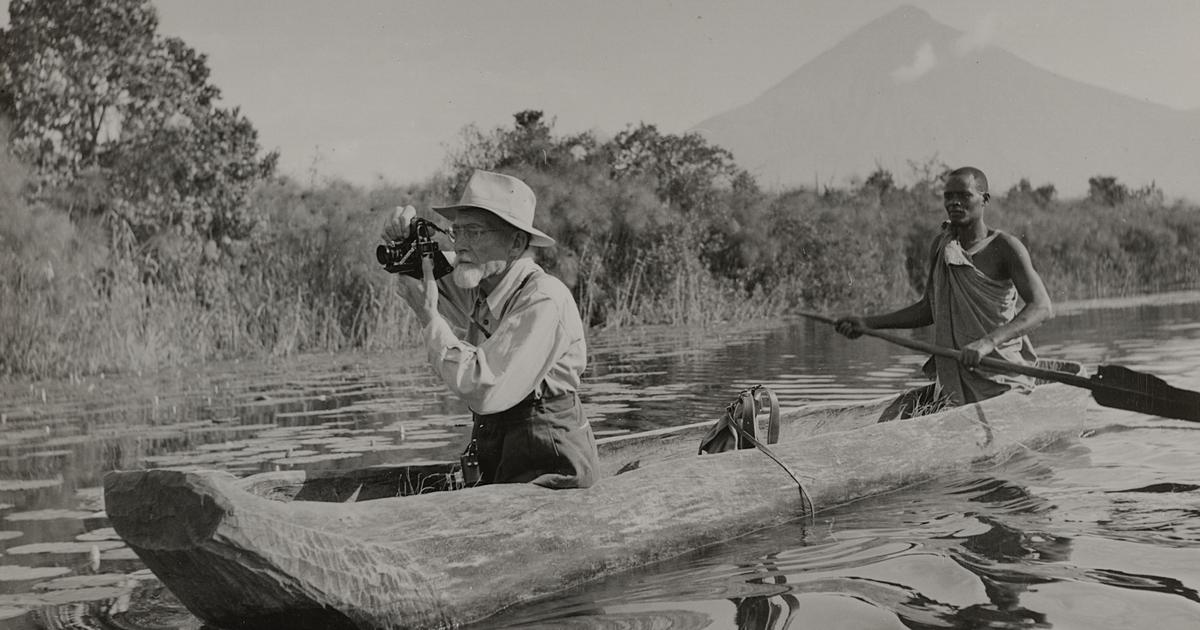Until January 9, 2025, the establishment is retracing Switzerland’s colonial history like never before through its new exhibition “Colonialism – an involved Switzerland”.
Switzerland has never been a colonial power and is only marginally concerned by the subject. However, through its traders, mercenaries, anthropologists and missionaries, the Alpine country has contributed to colonial expansion, giving rise to lively debates on how it should confront this past.
This is what an exhibition in Zurich seeks to clarify, which for the first time looks at this past that has long remained in the shadows but on which historians are now seeking to shed light in order to understand how the country has also benefited from it.
Entitled “Colonialism – an involved Switzerland”, the exhibition presents a series of objects which bear witness to this participation alongside the great European colonial powers.
It notably shows cotton canvases from the 18th centurye century used by Swiss traders as currency to buy enslaved people, bags to load goods such as cotton or cocoa onto ships, or the uniform of an officer enlisted in a mercenary regiment in the pay of the Dutch East India Company, then the British Crown.
Also readArt, football or watchmaking: in Switzerland, 10 museums not to be missed under any circumstances
“Since the Black Lives Matter movement, there has been a lot of debate about colonialism and Switzerland”
Also on display are a collection of butterflies assembled by a wealthy merchant on a coffee plantation in Cuba and the cap and whip of a Swiss national recruited as a civil servant in the Congo Free State in the early 20th century.
“It’s a difficult topic,” Denise Tonella, director of the Swiss National Museum, told the‘AFP. Before adding: “It is not easy to confront an unflattering subject”, but “it is an important question for today’s society”.
“Since the Black Lives Matter movement, there has been a lot of debate about colonialism and Switzerland,” she explains, with the aim of the exhibition being to provide tools to understand these issues. In the wake of the protests in the United States in 2020 following the death of George Floyd and the removal of a statue of a slave trader in Bristol, United Kingdom, the city of Neuchâtel was shaken by a controversy surrounding the statue of David de Pury, an 18th-century banker and merchant.
Long considered the benefactor of Neuchâtel, his hometown to which he had made generous donations, his statue was sprayed with red paint in 2020 and a collective that questioned his involvement in the triangular trade launched a petition to have it removed.
A compromise was reached, with the local authorities opting for an explanatory plaque and the installation, right next to it, of a critical work by a Geneva artist representing the statue upside down, its head buried in the base.
Theories that would justify colonization
“History does not interest people in the same way in all periods,” writes Basel professor Georg Kreis in the exhibition catalogue, explaining that these questions have long remained “in the shadows” at the academic level. Since it did not have a colony, Switzerland was seen as “a special case outside of general history”, an “innocent country”, the historian explains. But “interest in the colonial past changed after the new millennium”, he explains.
Over the past twenty years, academic work has multiplied.
Drawing on this research, the museum wanted to reflect all the facets of this colonial involvement, starting with the trade in raw materials and the transatlantic slave trade in which Switzerland participated through immense fortunes accumulated in the 18th century by traders, owners of plantations where people reduced to slavery worked.
However, the exhibition shows that Switzerland was involved in other ways, such as mercenaries recruited to suppress insurrections in colonial empires, or later geologists who participated in oil exploration. Or naturalists and anthropologists at the origin of racial theories that served to justify colonialism.
The latter also recalls that at the beginning of the 20th century, the universities of Geneva and Zurich were major centers renowned for their work in racial anthropology, where researchers measured skulls to hierarchize populations.
The exhibition will be held at the National Museum Zurich from September 13 to January 9.

The Best Online Games for Casual Players Looking for Quick Fun – Scale Aircrew Supplies
Development Mi | Development Mi
Galil ACE Buttstocks For Sale | IWI Firearms USA
Actividades – marandawalter – Tutorial de LEARNDASH
Quarterly Dental Provider Survey –
504 Gateway Time-out
viajesengrupo profilja – Starity.hu
Taylor Freelance AR-15 +3 Basebad For Sale | IWI Firearms USA
Leadership Books Transforms Publishing with Unique Support and Global Reach – 680 The Fan
Entertainment – Surat Khabar
Entertainment – Buzzing Asia
Regenerative Therapies For Optimal Health: New Book by Prof. Paul Lee Announced – KMLK
Jericho® 941™ For Sale | IWI Firearms USA
Streamlight ProTac Railmount 2L LED With IWI Logo For Sale | IWI Firearms USA
Bergabunglah dengan Hargatoto: Taruhan Togel dengan Taruhan Silver Minimal – Online Law Blog
Finance – Asean Coverage
Streamlight TLR-8A White LED With Red Laser And IWI Logo For Sale | IWI Firearms USA
Alumni Feedback Survey –
Business – Surat Khabar
jaimeharding – Ilm Institute
Albany Bankruptcy Attorney Chapters 7 & 13 Affordable Legal Service Update – WICZ
Exploring Online Bingo: More Than Just Luck and Numbers – Ff Ptv
Business – Surat Khabar
Rendición de Cuentas 2017 –
michealscott – Користувачі – Портал відкритих даних Дніпра
shelf panda
AseanCoverage – Next-Gen South East Asian News
Certificate verification problem detected
Biloxi, MS AC Installer: Residential Air Conditioning Installation Announced – WICZ
Comentarios de lectores/as